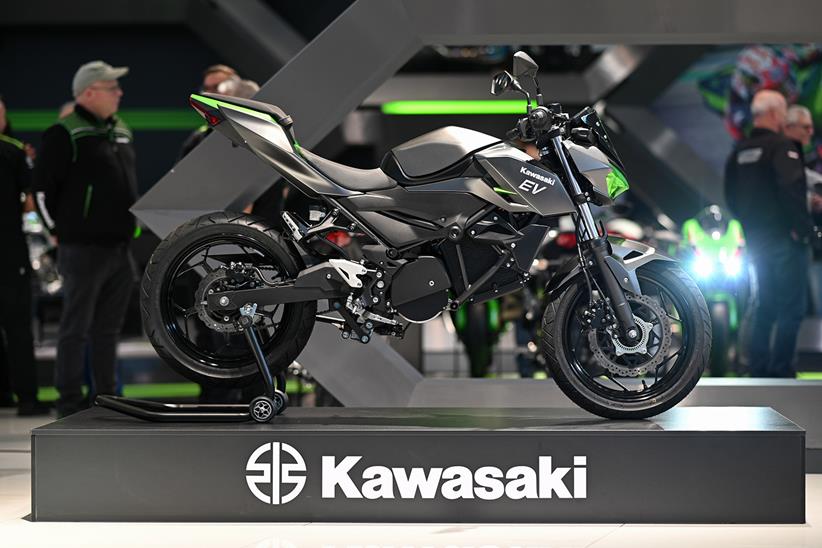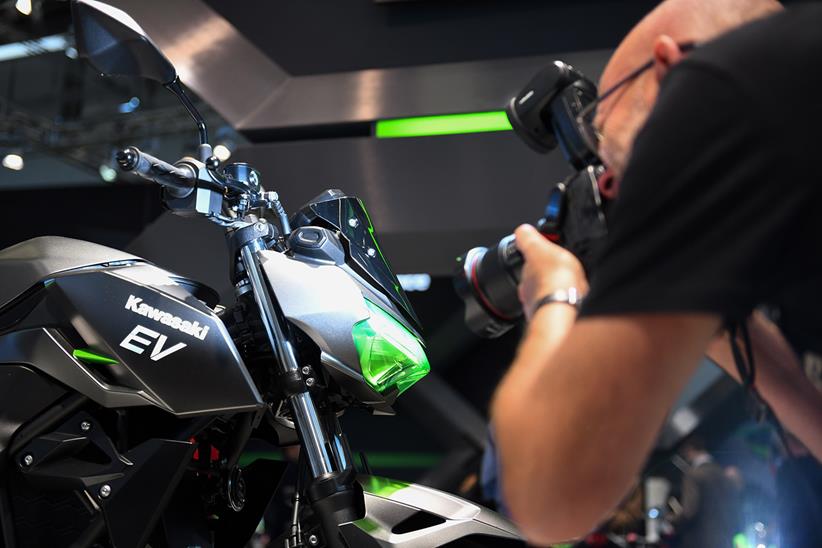Kawasaki step up EV plans: New prototype displayed at Intermot show in Germany
Kawasaki have again reinforced their future plans for sustainability by revealing a small-capacity electric concept bike at the Intermot trade show in Cologne.
The spectacle follows on from recent demonstrations of two prototype models – one electric and one hybrid – before the start of the prestigious Suzuka 8 Hour endurance race in July.
The model seen in Germany is the same battery offering as displayed at the Japanese racing event and looks to share much of its chassis and styling components with the learner legal Z125 naked.

Speaking in a press conference Managing Director of Kawasaki Motors Europe, Mr Masaya Tsuruno said: “These are prototypes of actual motorcycles we will produce.
“We are actively developing EV and hybrid motorcycles to bring to market. Today, I am delighted to preview a unique chance to view Kawasaki’s first-ever EV prototype production motorcycle.
“Now, another big topic, carbon neutrality,” he continued. “The international community demands tough action. At Kawasaki we have invested in this demand – not only with EVs but also all other potential options. We will also continue to develop and produce innovative models with internal combustion engines.”
Kawasaki plug-in to the future: Company make good on pledge to launch fun new electric range
First published 16 August 2022 by Ben Purvis
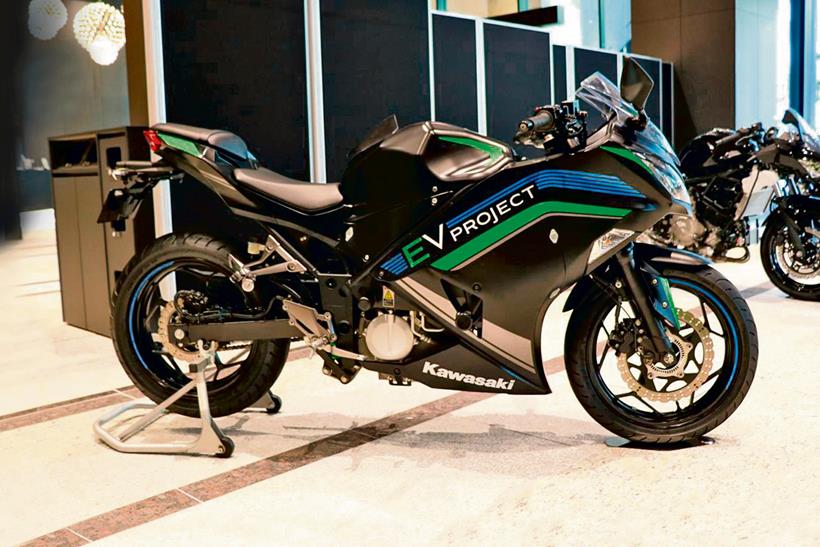
Speaking in late 2021, Kawasaki CEO Hiroshi Ito confirmed that 2022 would be the year that the firm broke into the electric bike market and now we’re just weeks away from the official launch of two machines that promise to make them an immediate contender.
Back then, Ito said: “In 2022, we will show a minimum of three electric vehicles globally. That is a promise.” The first of those was something of a disappointment: the Elektrode, launched onto the US market, which was simply a battery-powered balance bike for kids. The remaining two look much more interesting.
Filings published on the website of the National Highway Traffic Safety Administration in the USA show Kawasaki will have two electric bikes for 2023, codenamed ‘NX011AP’ and ‘NR011AP’.
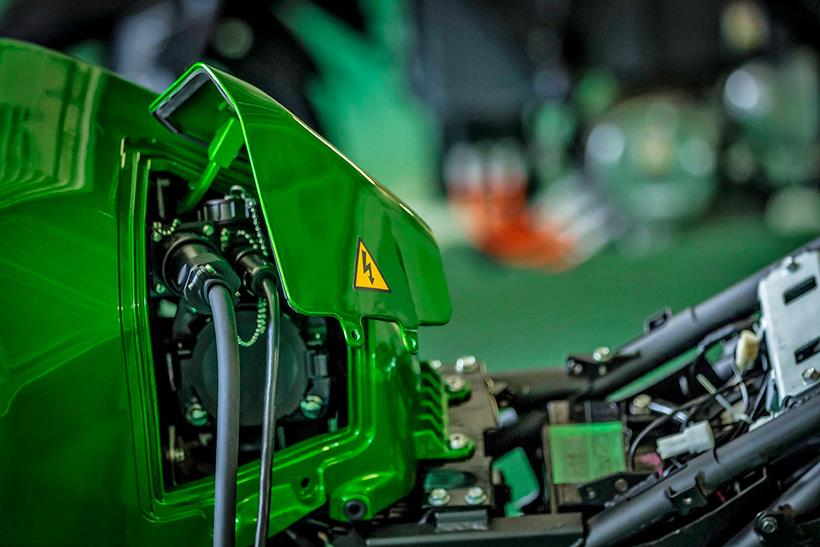
The designation follows Kawasaki’s usual pattern, with ‘X’ in the second spot used to denote a sportsbike and ‘R’ for a naked roadster, but the initial ‘N’ is new and means ‘Electric’ in Kawasaki’s naming protocol. The document, which was swiftly updated to remove mention of the new models, showed they each made 11kW (15hp), showing they’ll be L-plate legal in Europe.
That means we can expect two mechanically identical machines, one faired and one naked, along the lines of the Z125 and Ninja 125, but with electric power. The showroom model names aren’t yet known, but Kawasaki have previously trademarked the titles Ninja E2 and Ninja E2-R.
From a technical standpoint, the bikes are expected to be direct descendants of a project that the company have had underway for more than a decade, eventually leading to a prototype sportsbike in 2019.
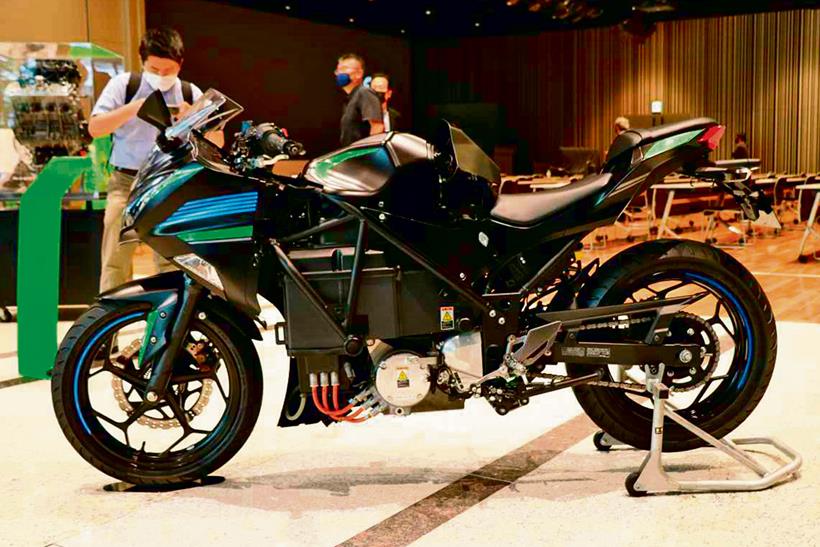
Where petrol learner bikes are limited to a maximum of 14.8bhp, electrics are measured by their ‘continuous’ rating even if their peak is twice as high. With a rated 11kW (14.8bhp) the production Kawasakis are likely to manage an absolute maximum of around 22kW/30hp, giving performance on a par with a 300cc single while remaining learner legal.
Kawasaki have filed multiple patents during the development of their electric bike project, many of which will surely feed through to the production model. They include the unusual use of a four-speed transmission, similar to a conventional bike’s gearbox, to add extra performance and enhance the experience for seasoned riders, while the huge torque of electric power means it should also be possible to leave the bike in a single ratio.
All will be revealed in full later this year, most likely at November’s EICMA show in Milan, where the electric prototype first broke cover three-years-ago.
Kawasaki’s EV project in brief
Rapid charging: Kawasaki’s prototype used DC fast charging, which should allow the battery to be replenished in a matter of minutes rather than hours. A second charge circuit allows slow, trickle charging via a normal AC wall socket.
Running gear: Kawasaki’s prototypes used the suspension, brakes, and wheels from the Ninja 125, and given the similar performance expected from the production models that’s likely to remain the case.
Clutch control: There’s a conventional clutch lever, again adding familiarity for riders who’ve grown up around combustion engines and giving a level of control missing on direct-drive electrics.
Wider appeal: The four-speed transmission, developed as part of Kawasaki’s ‘Rideology’ philosophy, intends to make electric bikes more appealing to seasoned riders.
Clever construction: Several of Kawasaki’s patents relate to a removable left-hand side frame, allowing the entire battery and powertrain to be constructed separately and then slotted into place during final assembly.
